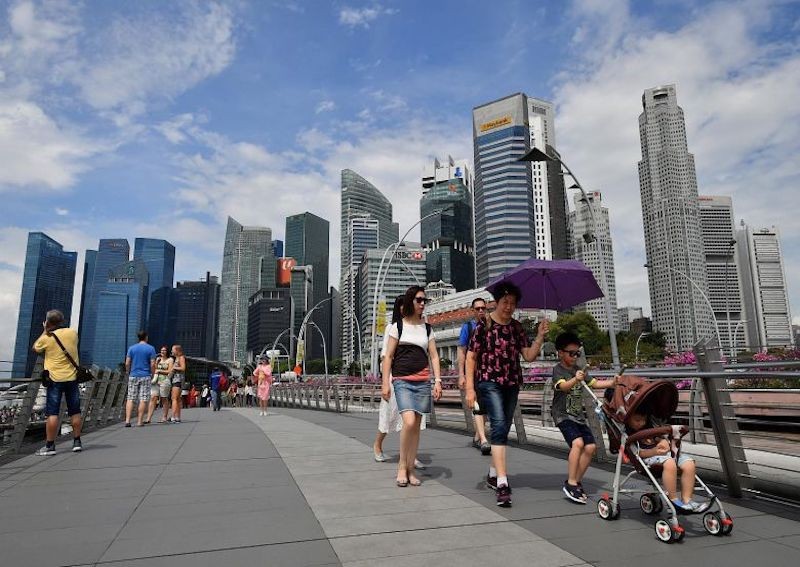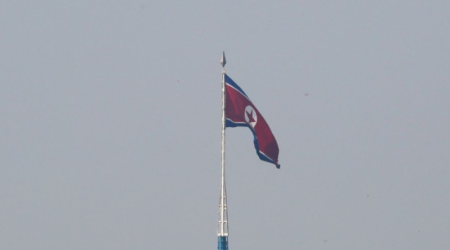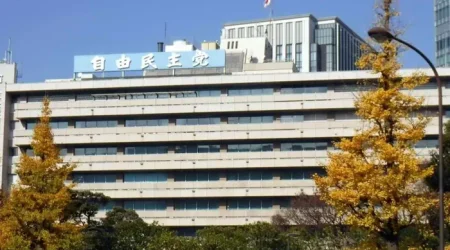Chinese manufacturing’s coronavirus crisis gives Singapore an opportunity

Covid-19 made the world realise what many had long suspected. That countries around the globe had become dangerously overreliant on China as a manufacturing base.
When China went into lockdown and its factories shut, supply chains and logistics were deeply disrupted and many countries suffered as their access to goods dropped drastically.
In response, many nations have decided to bring manufacturing back to their shores.
Herein lies an opportunity for Singapore. Boosting manufacturing’s contribution to the economy would enable the city state to remain in control of major parts of the supply chains it relies on, helping it to react in times of emergency and remain self-sufficient in critical goods.
Doing so would be a return to the glory days for Singapore manufacturing, which has declined as a percentage of GDP over the past three decades. As recently as the 1990s, Singapore’s manufacturing industry paralleled those of its fellow tiger economies of Taiwan and South Korea.
By the end of that decade, the contribution of manufacturing to the three economies’ GDPs had peaked at around 30 per cent. Today, however, while manufacturing continues to contribute about 30 per cent of the GDP of Taiwan and South Korea, it makes up just 19 per cent in Singapore.
This fall has been mirrored in employment. In 1994, manufacturing provided jobs for around 25 per cent of Singapore’s workforce. By last year, that figure had dropped to just 13 per cent. In South Korea, manufacturing has continued to employ about 25 per cent of workers throughout the past 10 years.
Reversing this trend is entirely feasible – if Singapore acts now. The city state can still call on the skilled manpower that has been displaced in recent years as manufacturing companies made their exit. But it must act fast before these skills become obsolete.
The coronavirus is a timely reminder of the need to refocus on manufacturing, to make it a bigger pillar of Singapore’s economy and a bigger employer.
How to refocus
Singapore has various options. It can build on its reputation as the prototyping factory of the world; it can strengthen industries it is already strong in by acquiring SMEs from Europe, the United States and Japan; it can restart industries in which it once had a competitive edge and skill sets (such as semiconductors and contract manufacturing); it can build strength in emerging industries such as robotics, automation, artificial intelligence, 3D printing and food production and preservation.
The time is right to spot opportunities and act quickly.
Though China may still be the factory of the world, Singapore can be the prototyping factory of the world – the place where companies transition their products from the laboratory to the factory floor.
The city state has ample mini-factories ideally suited to this purpose, covering a cross section of capabilities and technologies.
An immediate priority is to lower the cost of operations to sustain a healthy manufacturing base. Otherwise rising costs of rentals, infrastructure, utilities and labour will make it less feasible for companies to invest in capital expenditure and upscaling.
Companies can only reinvest their profits in Singapore and hire more people if productivity goes up and costs are kept down.
Singapore needs an integrated strategy to manage land costs, utilities and labour that constantly adjusts to benchmarks with manufacturing centres such as South Korea, Taiwan, mainland China, India and even the US.
It could offer differential pricing of industrial land, rentals and utility rates to stay competitive and ensure companies remain in Singapore.
The city state must look past the old argument that its labour costs are just too high for manufacturing to thrive. This no longer holds water. The rise of automation, robotics and AI means labour will soon be just a fraction of total manufacturing costs.
Trained workers can upskill to manage highly automated factories. Output per capita will rise and meaningful jobs will be created.
Pivot to the region
There is a huge opportunity to serve the region by developing regional supply chains managed from Singapore, while contributing to the economic development of neighbours in the Association of Southeast Asian Nations (Asean).
Serving as a regional hub means developing and managing regional supply chains, and expanding the so-called Growth Triangle beyond Singapore-Malaysia-Indonesia – as envisaged by Singapore’s former prime minister Goh Chok Tong – into a growth corridor for the whole of Southeast Asia.
Today, many cities in Vietnam, Indonesia and Thailand are ready for development as mass production or assembly bases.
Singapore should create local industries that initiate their prototyping and manufacturing in the city state before moving elsewhere in the region for the final touches. In time, these could become multinational companies in control of supply chains across the region.
The advantages of such a strategy are numerous. It provides a cost advantage by sourcing cost-effective mass production; it takes advantage of a captive market in a region of 650 million people; it connects designers with suppliers, manufacturers and e-commerce vendors; it gives a new generation of industrialists the confidence to prototype, produce and sell quality goods.
Last but not least, it will boost regional camaraderie as Singapore helps the economic development of its neighbours and creates jobs for their populations too.
Singapore’s other big strength lies in its intellectual property, or IP. From 1991 to this year, it invested $61 billion (US$44 billion) in Research, Innovation and Enterprise (“RIE”) funding. Reaping the rewards depends on its ability to commercialise the research.
More of the RIE money must be allocated to innovation.
This means setting a new set of Key Performance Indicators – such as time to market, marketable applications, new start-ups, regional reach – that focus more on proof of value to create commercially viable entities.
The pay-off will be clear in a new generation of Singapore Inc companies, built on converting IP know-how to reach the markets.
Take the aim of being 30 per cent self-sufficient in food. Cross-disciplinary research would be needed to bring together experts from food sciences, biochemistry and the humanities. Grants could be awarded to teams with promising solutions.
Singapore companies would host these teams and nurture them into industry leaders.
At present, the Innovation and Enterprise Budget is managed through the National Research Foundation. While Singapore has done well in research, it is lagging in innovation and enterprise. It makes sense to separate the management of research from that of innovation and enterprise.
What is needed is a new foundation to champion manufacturing.
This could be modelled on the National Research Foundation and perhaps be called the National Innovation and Enterprise Foundation.
Singapore also needs a new national venture builder. While the old venture builder, Temasek Foundation, has had much success creating companies like Singtel, DBS and Singapore Technologies, its mindset has shifted to being a fund manager whose role is to pick winners and maximise returns, rather than build a venture from the ground up.
Fund managers and venture builders require different skills, mindsets and focuses. It is futile to keep asking Temasek to play a role as a part-time venture builder. Instead a whole new entity is needed to be Singapore’s future venture builder – and its first mission must be to reboot manufacturing.
If some of Temasek’s funds can be reallocated, it will have plenty of cash
Opportunity knocks
The coronavirus-induced crisis that has forced the world to rethink its relationship with Chinese manufacturing represents an immense opportunity for Singapore to reboot its economy.
An exciting future calls, one in which manufacturing is built upon a more competitive and digitally connected landscape of supply chains, that relies on the latest technologies in 3D, automation, design and advanced prototyping.
One in which new products are developed in Singapore. The creation of a National Innovation and Enterprise Foundation with a decisive funding shift towards product development and a shorter time to market can reboot the industry rapidly.
Singapore is best placed to cast its net wide, attract growing global and regional players, and acquire meaningful stakes in foreign companies while concentrating resources and networks locally.
Do not dismiss as a dream the idea that Singapore can excel once more in manufacturing. It is time to re-fire the industry as a pillar of the economy, one that can create many more meaningful jobs for Singaporeans.
Just do it and do it now. Singapore can succeed.
This article was first published in South China Morning Post.












Leave a Reply